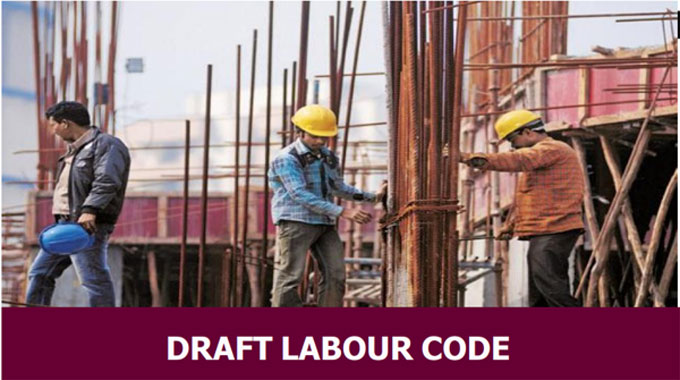NEW! The Gist (FREE) | E-BOOKS |
DRAFT LABOUR CODE: Civil Services Mentor Magazine: MAY - 2017
::DRAFT LABOUR CODE::
There are various labour laws for regulating employment and conditions of service of workers. These laws also provide for maintaining registers and furnishing returns to the concerned enforcement authorities. The labour laws of independent India derive their origin, inspiration and strength partly from the views expressed by important nationalist leaders during the days of national freedom struggle, partly from the debates of the Constituent Assembly and partly from the provisions of the Constitution and the International Conventions and Recommendations. The relevance of the dignity of human labour and the need for protecting and safeguarding the interest of labour as human beings has been enshrined in Chapter-III (Articles 16, 19, 23 & 24) and Chapter IV (Articles 39, 41, 42, 43, 43A & 54) of the Constitution of India keeping in line with Fundamental Rights and Directive Principles of State Policy. But according to some analysts labour laws has become a hinderace in the growth of industries in the country. Under the Constitution of India, Labour is a subject in the concurrent list where both the Central and State Governments are competent to enact legislations. There are 45 different national- and state-level labour legislation in India. Important among those are-
-
The Industrial Disputes Act, 1947.
-
The Child Labour (Prohibition and Regulation) Act, 1986.
-
The Factories Act, 1948
-
TheTrade Unions Act, 1926
-
The Apprentices Act, 1961
It was framed pursuant to the recommendations of the 2nd National Commission on Labour. It was done with a view to simplify, rationalize, consolidate, and amend the laws relating to social security of workforce. Currently there are total fifteen Labour Laws including Employees' Provident Fund Act, Employees' State Insurance Act, Maternity Benefit Act etc. Ministry had proposed to replace these Labour laws with the four codes.
Salient features
-
Four codes to replace all the existing laws are codeof wages, code of Industrial relations, Code on Social Security & Welfare and Code on Occupational Safety, Health & Working Conditions
-
Employer means the employer of any entity that employs an employee oremployees, either directly or through contractors.
-
It is applicable to any person who is employed for wages by the entity, International workers and Indian workers outside who wants to become a member under this code.
-
Draft Code is not applicable to such class of workers that has been specified in Part - II of the First Schedule
-
Draft code covers the workers from Organised as well as Unorganized Sectors of Employment.
-
It proposes to constitute a National Social Security Council of India for reviewing and monitoring the implementation of the Draft Code and also to advise the govt.
-
It proposes to invite claims and objections for the unclaimed amount of the preceding financial year within a period of minimum six months
-
It proposes to provide a unique Aadhar-based registration service for registration of workers to be named as Vishwakarma Karmik Suraksha Khata (VIKAS)
-
The Draft Code proposes allowing the benefits even when the Employer fails or neglects to pay any contribution
-
The total contribution to be made by employers towards Employees' Provident Fund and Employees' State Insurance Scheme is proposed to be capped at 30% of the workers' income.
-
For the first time, cover to agricultural workers is being provided along with selfemployed people. The target is to provide social security benefits to 45 crore workers.
-
A National Social Security Council, chaired by the PM, has been proposed to streamline and make policy on social security schemes related to all the Ministries.
Problems
Despite being a very well intentioned and well thoughtout plan, draft labour code still has some problems which needs to be looked upon for the better results. Some of the problems of the draft code are given below:
-
It does not recognise that social security systems for old age are structurally different from those designed for poverty.
-
It tries to consolidate existing 15 labour laws which will be very difficult to do.
-
It tries to combine elements of Universal Basic Income, Direct Benefits Transfer, Provident Fund, Health Insurance, Maternity Benefit, etc. which will have huge financial implications.
-
A single account for voluntary contribution, mandatory contributions, mandatory subsidised scheme, and social assistance programme for poor which is an accounting and actuarial impossibility.


